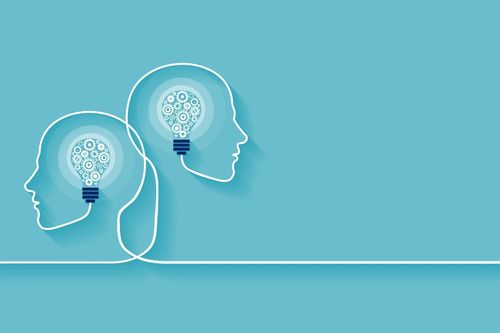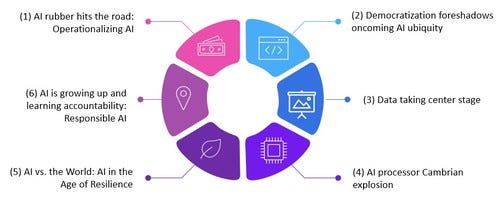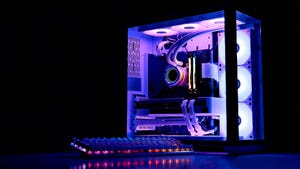Mikimoto wave transition and other tidbits from Omdia research

Mikimoto wave transition and other tidbits from Omdia research
It is no secret that artificial intelligence and intelligent automation are gathering momentum. The main driver for the increased adopt of these technologies is their contribution to business value on many fronts – as a competitive advantage, productivity boost, efficiency enhancer and prediction engine.
Here are six trends for 2023 and beyond from our sister research firm Omdia:
Figure 1: 
1. AI rubber hits the road, aka operationalizing AI
AI market adoption has reached critical mass, with the number of deployments likely to double in the next two to three years. But these early majority buyers still need to overcome many internal challenges to adopt and scale AI successfully, including budgets, literacy, organizational structure, KPIs, sustainability, risk and lifecycle management, etc.
Technology vendors are building solutions for AI responsibility (privacy, transparency, bias, etc.), repeatability, delivery, and governance. Best practices are also emerging from the early adopters. Also, new consumption models such as AI as a service, pre-built AI, and embedded AI will help not just to operationalize AI but do so rapidly and at scale across the business.
2. Democratization foreshadows coming AI ubiquity
High demand for AI and advanced analytics in the enterprise has revealed a significant technological skills gap, one that may never be filled through human talent alone. Yet companies are beginning to see solutions to bridging this chasm through a rapidly evolving set of technologies and practices laser-focused on democratizing AI.
New AI-driven automated workflows and low/no-code AI development tools, along with large-scale pre-trained AI models, embedded AI business apps, and even end-to-end AI solutions spanning software to silicon, all promise to turn AI into a more readily consumable enterprise resource with far fewer requirements for specialist skills.
Still, many questions remain. Can AI be trusted to build responsible AI outcomes? Will AI specialization vanish beneath a few, massive, vertically integrated platforms?
3. Data taking center stage
As data volume and variety expand, and as it moves more freely among on-premises, cloud, and multiple-clouds, new ways are emerging to manage and exchange data.
Increasingly, ‘data-centric AI’ methodology means that data sets, software, systems, and semiconductors are developed together in response to the sustainability and governance issues of giant data sets.
Metadata repositories (data catalogs), data fabrics (data as an API service), and data exchanges/marketplaces will take center stage, helping companies do away with data silos, fragile data pipelines, and uneven security/privacy policies — all without disrupting existing infrastructure investments.
4. AI processor Cambrian explosion
The computational demands of state-of-the-art AI are transforming the semiconductor market. Having shifted from CPU to GPU computing, the industry is now shifting towards dedicated AI acceleration and from merchant to custom silicon, in a so-called Makimoto wave transition.
Starting in 2023-2024, the x86 ecosystem is likely to catch up with Apple’s lead as AI acceleration becomes a standard CPU feature, while at the same time customization drains value from the ecosystem itself.
5. AI vs. the world, aka AI in the age of resilience
Macro societal and economic trends are impacting market progressions of all kinds in ways not seen in the last 40 years. Issues such as supply chain, global inflation, wars, growing global power friction, climate change and COVID-19's impact on labor will shape every aspect of AI technology markets in 2023 and beyond. How will the AI ecosystem navigate these risks and help companies use AI to do the same?
6. AI is growing up and learning accountability, aka Responsible AI
With AI having gone mainstream, its dark side is increasingly clear and worrisome: from bias and discrimination to deep fakes and nudging. Business leaders and governments have all recognized that the only way to obtain sustainable and equitable benefits is by doing AI responsibly.
Globally, this means regulations, standards, audits and certifications. And within enterprises deploying AI, active governance. Best practices and tooling are emerging to support ethical AI use, explainability, assurance, and proactive disclosure.
About the Author(s)
You May Also Like


.jpg?width=700&auto=webp&quality=80&disable=upscale)
.jpg?width=700&auto=webp&quality=80&disable=upscale)
.jpg?width=700&auto=webp&quality=80&disable=upscale)


.jpg?width=300&auto=webp&quality=80&disable=upscale)

.jpg?width=300&auto=webp&quality=80&disable=upscale)